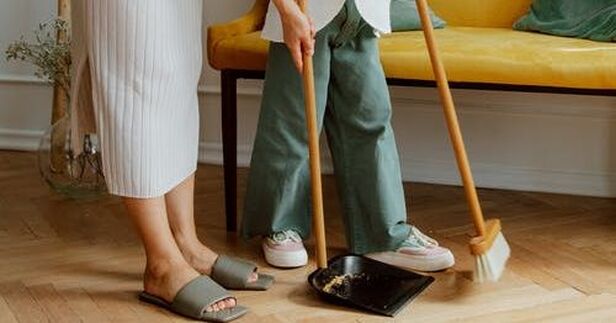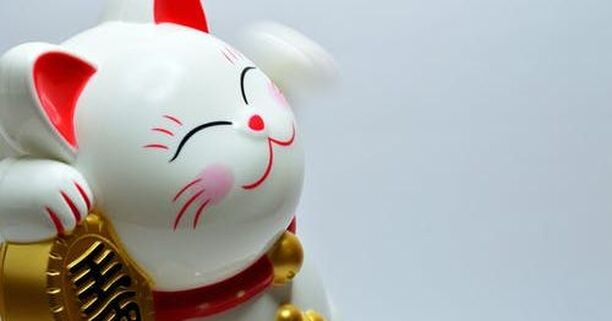|
"Out with the old, in with the new" is the phrase we probably most think of so it is not surprising that the common thread linking cleaning traditions at the end of the year is all about starting the new year fresh, optimistic and with a clean slate. We know clutter creates stress, and that dust, mold, and stale air are unhealthy, so it also makes good sense from a physical and mental health perspective. There are many myths and sayings that we may have heard surrounding New Year's Day like doing laundry 'washes away' good luck or that taking things out of your house on January 1st can signify loss will come in the new year. We may not know where they came from, but they tend to reflect belief that what happens in the first day of the year is a harbinger of things to come during the next 12 months. In the US, we tend to focus on Spring cleaning, but around the world, there are many, many traditions that incorporate cleaning at the end of the year or at the start of the new year. If you don't already have a tradition of year-end cleaning, here are some to spark your own ideas and to help you move gracefully from the past year into the fresh possibilities, hopes, and luck of the new year. My favorite takeaways? Do all the sweeping and cleaning before the bell tolls midnight. On New Year's day, make sure the brooms stay out of sight, and don't take anything out of the house (at least not out the front door). Enjoy! Hogmanay - ScottlandHogmanay is the Scots word for the last day of the old year and is synonymous with the Scottish celebration of the New Year. Edinburgh's Hogmanay says that starting the new year with a dirty house is seen as bad luck, so cleaning the home before the start of the new year is part of the tradition. Historically, this also included meant removing any old ashes from the fireplace. As with other practices around the world, it symbolizes clearing out the old year and giving welcome to the new year Osoji (大掃除) - JapanThe tradition of Osoji (or O-souji) which translates to "Big Cleaning", happens at the end of the year. The history of Osoji has practical roots from a time where the hearth was central and it was important to clean the resulting soot and dirt, so an important element is the susuharai or 'dust cleaning'. It can start from mid-December on. Similar to other traditions, Osoji entails decluttering and getting rid of anything that is not useful, usable, or needed, and doing a deep clean in the home as well as workplaces. The practice has evolved as a ritual to prepare for the new year, giving thanks for the blessings of the previous year and purifying the spaces for the year to come. It represent a "fresh spirit and a new beginning". Cleansing fire - AztecsAztecs used to burn all of their mats during the new year, as fire was considered cleansing. They would then take the clean, new fire to their homes to light their hearths. I love fire so I love this. Just the idea of burning something from the old year and using it to the new year is beautifully symbolic. Most of us don't have a constant fire in the hearth these days but if you have a fireplace or enjoyed a bonfire this year, make the symbolism practical and put the ashes from the old year into the garden (or a planter) to grow something fruitful in the new year. End of Year Cleaning - Dominican Republic"Año nuevo, vida nueva" (New year, new life) A Dominican tradition is the End of Year Cleaning, which is a thorough house cleaning, including clearing cupboards and drawers and scrubbing everything. That means getting rid of anything that no longer is useful or isn't needed and bringing in the New Year with a completely clean home. Sweeping from the inside out sends problems, conflicts and bad energy out from the year that is ending. Some even say even the ceiling should be swept, if that is possible. Then, the old brooms are thrown out before midnight so as not to bring bad luck into the New Year. There is no sweeping on New Year’s Day and it is best to keep the new replacement broom outside the house until the new year begins. Sweep Away the Dust - ChinaChinese traditions around the new year may be a bit more widely known but remember the Chinese new year follows the lunar calendar and the New Year is February 1st in 2022. Beginning days earlier on the 24th of January, it is time for the winter cleaning, or "sweeping away the dust". This gets rid of the bad luck so it is ready to fill with good luck. Put away old things in order to welcome the new year. Fix things that are broken, and maybe add a fresh coat of paint to your home. Rooms should be swept from the entrance to the center and put the trash out the back door (The front door is for the good luck to come in). Stash away your brooms and don't use them at the start of the new year, otherwise good fortune may be swept away. Just for Fun: |
Recent PostsCategories
All
Archives
June 2024
|
Copyright © 2024 - Hero Management, Inc









 RSS Feed
RSS Feed